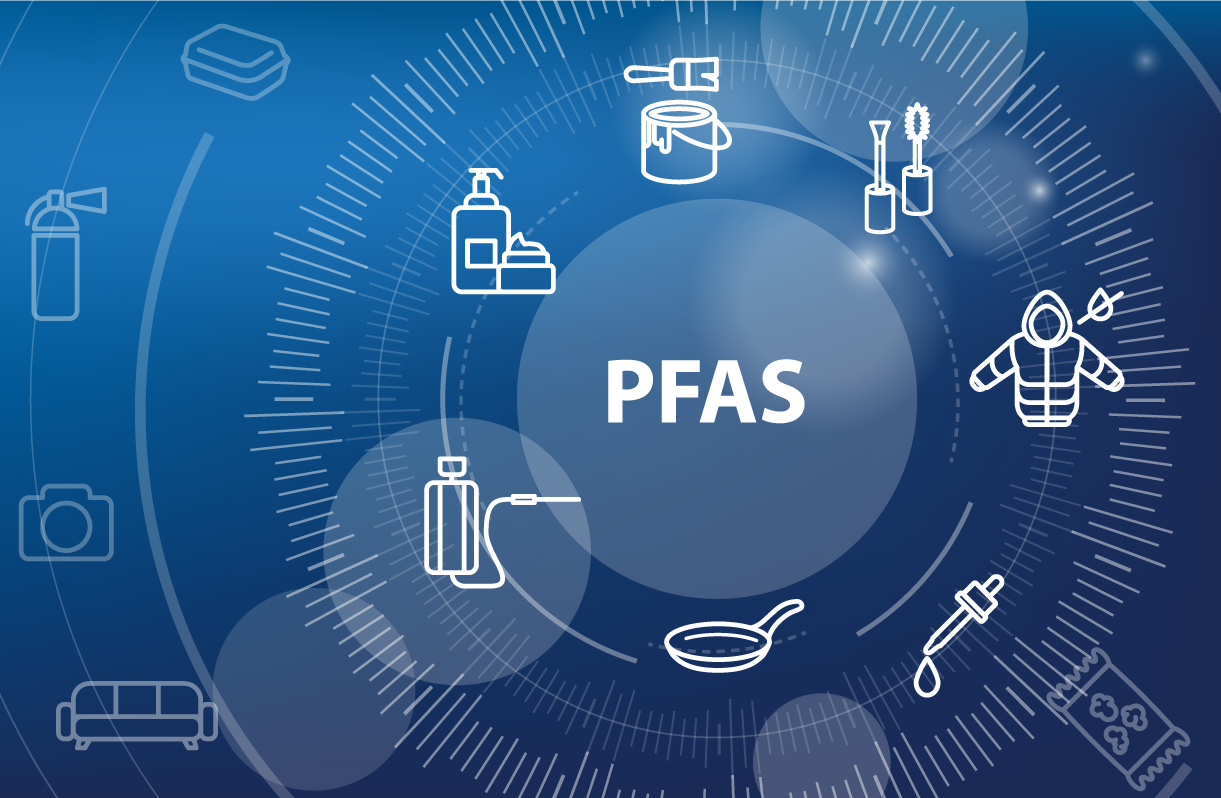Discharges of plastics into the environment are steadily increasing, both in aggregate amounts and in associated environmental and health concerns. The United Nations has estimated that plastic debris accounts for at least 85 percent of total marine waste; an estimated 11 million metric tons of plastic enter the world’s oceans annually, and on current trends this will triple by 2040. In response to these concerns, the state of California is creating laws and regulations intended to reduce plastics discharges in the state. In addition to plastics recycling requirements (the state “bottle bill” and others), California has created a focus on “microplastics.” In February 2022, the California Ocean Protection Council (OPC) adopted a new Statewide Microplastics Strategy (the Strategy); the rest of this note provides general background on California’s approaches to plastics and microplastics, and summarizes the Strategy.
Audit, Compliance and Risk Blog
The US Environmental Protection Agency (EPA) continues to expand and refine environmental compliance requirements, including those related to greenhouse gas (GHG) emissions. In particular, facilities and organizations subject to EPA's mandatory GHG emission reporting rules should be preparing to submit reports covering calendar year 2021. The remainder of this note summarizes these requirements.
Read More
Tags: EPA, Greenhouse Gas, ghg, Environment
EPA and Corps of Engineers propose another re-definition of “Waters of the United States”
Posted by Jon Elliott on Mon, Jan 03, 2022
The Clean Water Act (CWA) empowers federal agencies to regulate activities that may affect “waters of the United States”—sometimes called “navigable waters.” These activities include water quality planning and discharge regulation by the US Environmental Protection Agency (EPA) and delegated states, and regulation of projects that may lead to “dredge and fill” of waters, requiring permits from the US Army Corps of Engineers (Corps).
However, CWA does not define this critical term. For many years, agencies used regulatory definitions jointly developed by EPA and the Corps in rules that date primarily from 1986, which included ambiguities that increased agency discretion but also frustrated landowner aspirations in some cases. However, beginning in 2001 a series of decisions by the US Supreme Court frayed the expansive edges of the regulators’ interpretations. First, in Solid Waste Agency of Northern Cook County v. U.S. Army Corps of Engineers (SWANCC), the Court ruled that the Corps lacks jurisdiction over “isolated” waters and wetlands that are not “adjacent” to navigable waters—such as “prairie potholes,” mudflats, and freshwater seasonal ponds. Then, in Rapanos v. United States, the Court ruled in 2006 that the Corps can exert jurisdiction over non-adjacent wetlands where there is a “significant nexus” between the wetlands and navigable waters (in addition, the wetlands must be at least “relatively permanent”).
Read MoreTags: EPA, clean water, Environment, PCBs, Wetlands, waters, water
In 1976, an important motivation for enactment of the Toxic Substances Control Act (TSCA) was to empower the Environmental Protection Agency (EPA) to control polychlorinated biphenyls (PCBs), which had been developed as superlative insulation fluids but had come to be recognized as persistent toxic contaminants that bioaccumulate in the environment. TSCA banned the manufacturing, processing and distribution of new PCBs effective January 1, 1978, except in a “totally enclosed manner” or with an express exemption from EPA (including a finding that the exempt activity does not pose an “unreasonable risk of injury to health or the environment”). Even enclosed activities were banned beginning in 1979, unless with an express exemption from EPA. Additional provisions apply to non-banned activities, and to the cleanup and disposal of PCB-containing wastes. PCBs remain in use in enclosed/exempt locations throughout the country, and new contamination is identified from new leaks and legacy sites.
Read MoreTags: EPA, tsca, CWA, Environment, Toxic, Toxics Release, PCBs
On November 15, 2021, the Environmental Protection Agency (EPA) published its “2021 National Recycling Strategy,” which summarizes recent efforts to organize support for recycling of solid wastes – typically referred to in regulatory parlance as “municipal solid waste (MSW)” – and sets out near-term priorities for further progress to reach a national recycling rate of 50% by 2030. The Strategy notes that “The U.S. MSW recycling system currently faces a number of challenges, including confusion about what materials can be recycled, recycling infrastructure that has not kept pace with today’s diverse and changing waste stream, reduced markets for recycled materials, and varying methodologies to measure recycling system performance.” EPA characterizes this Strategy as “part one in a series of strategies to help us re-envision how we use materials more broadly.” As part of these broader considerations, the Strategy incorporates contemporary emphases on environmental justice and climate change. (I’ve recently written about state-level initiatives including “product stewardship” HERE and HERE). The remainder of this note summarizes this policy document.
Read MoreTags: EPA, Environment, Recycling
US Government rolls out comprehensive approach to PFAS “forever chemicals”
Posted by Jon Elliott on Mon, Nov 08, 2021
On October 18, the federal government announced comprehensive plans to design and implement protections against perfluoroalkyl and polyfluoroalkyl substances (PFAS) – often referred to as “forever chemicals.” PFAS have been manufactured and used since the 1940s and are now found in many environmental settings, and most Americans’ blood. These plans were rolled out through statements by President Biden and longer pronouncements by the Environmental Protection Agency (EPA), Department of Defense, Food and Drug Administration, Department of Agriculture, Department of Homeland Security, and Department of Health and Human Services.
The remainder of this note provides basic information about PFAS, and EPA’s new “PFAS Strategic Roadmap: EPA’s Commitments to Action 2021-2024.”
Read MoreTags: EPA, Environment, PFAS, NIEHS
EPA marks the 35th anniversary of Toxics Release Inventory and proposes to list additional chemicals
Posted by Jon Elliott on Mon, Nov 01, 2021
October 17 was the 35th anniversary of the enactment of the Emergency Planning and Community Right-To-Know Act of 1986 (EPCRA, also referred to as SARA Title III). EPCRA presents several separate programs, including release prevention and reporting for a fairly short list of extremely hazardous substances (which I discussed HERE), inventory reporting for most hazardous materials (which I discussed HERE), and filing of annual toxic chemical release inventory reports with the Environmental Protection Agency (EPA) and the state, on one of two forms (Form R or Form A) – usually called the Toxics Release Inventory (TRI) program (which I’ve discussed several times, including HERE).
EPA is celebrating the TRI program anniversary on its website. Meanwhile, the agency has also proposed to add an additional dozen chemicals to the TRI reporting list. The reminder of this note summarizes these activities.
Read MoreTags: EPA, Environment, Toxic, Toxics Release, TRI
SEC emphasizes need for clear disclosure of climate change-related impacts on public companies
Posted by Jon Elliott on Mon, Oct 25, 2021
In September 2021, the Securities and Exchange Commission (SEC) Division of Corporation Finance (Division) provided public companies with guidance about disclosures of climate-related information that SEC expects from public companies. This guidance appears in a newly-released template with sample comments the Division may issue to companies regarding failures to make adequate climate-related disclosure. The remainder of this note provides some context to the relevant SEC-administered provisions, and summarizes the Division’s new letter.
Read More
Tags: SEC, climate change, csr, Environment
On September 23, 2021, the US Environmental Protection Agency (EPA) announced final rules to phase down production and consumption of specified hydrochlorofluorocarbons (HFCs) (I wrote about the proposal HERE). These HFCs are used in refrigeration and air conditioning and fire suppression, and as foam blowing agents and solvents. These rules are consistent with directives included in the 2016 Kigali Amendment to the United Nations-sponsored Montreal Protocol on Substances that Deplete the Ozone Layer (which I wrote about HERE). The US finally enacted statutory support for Kigali-like requirements in the December 2020 coronavirus relief bill (American Innovation and Manufacturing Act of 2020 (AIM Act)), which included dozens of unrelated provisions within its 5,593 pages.
Read More
Tags: EPA, climate change, Environment, HFCs, Montreal Protocol, Ozone Layer
US Federal insurance Office seeking information on climate-related financial risks
Posted by Jon Elliott on Mon, Sep 27, 2021
Organizations around the world are responding to the latest climate-related risk assessment produced by the Intergovernmental Panel on Climate Change (IPCC), which replaced earlier cautionary information with an urgent warning that climate change is “widespread, rapid, and intensifying.” On August 31, the US Federal Insurance Office (FIO), an element of the Department of the Treasury, published a “Request for Information on the Insurance Sector and Climate-Related financial Risks” (RFI) in the Federal Register, posing 19 questions it will use to focus its application of climate-related risks to the domestic insurance sector. Insurers should obviously be interested in these questions and their answers, but any entity that buys insurance should consider them as well. The remainder of this note summarizes FIO’s questions.
Read More
Tags: climate change, Environment, FIO, IPCC, RFI










